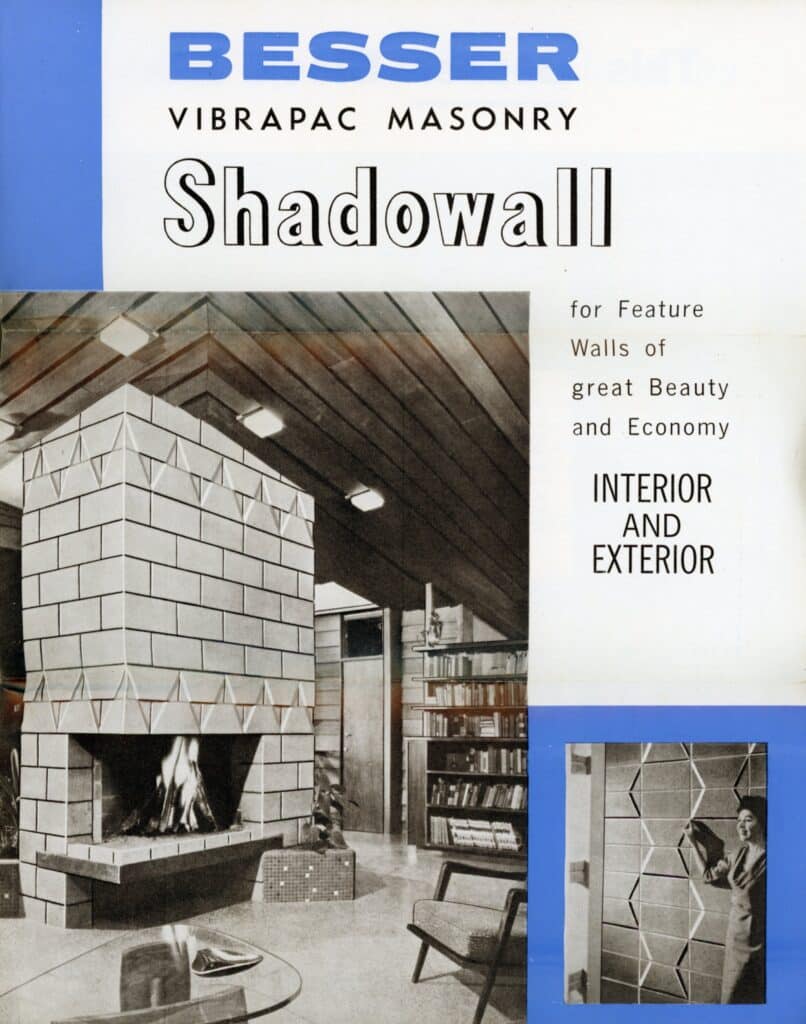
Besser Vibrapac Masonry Australian marketing material
Besser blocks are a type of concrete blocks that have been widely used in mid-century modern architecture, especially in the USA and Australia. They are also known as cinder blocks, breeze blocks, or concrete masonry units (CMUs). Besser blocks have many advantages, such as being cost-effective, durable, easy to install, and insulating. They also come in various sizes, shapes, colours, and textures, which allow for creative and versatile design possibilities.
Besser blocks were invented in 1904 by the Besser Manufacturing Company in the USA, which developed a machine that could produce standardised and consistent concrete blocks. The name Besser became synonymous with concrete blacks, and the company licensed its technology to other manufacturers around the world.
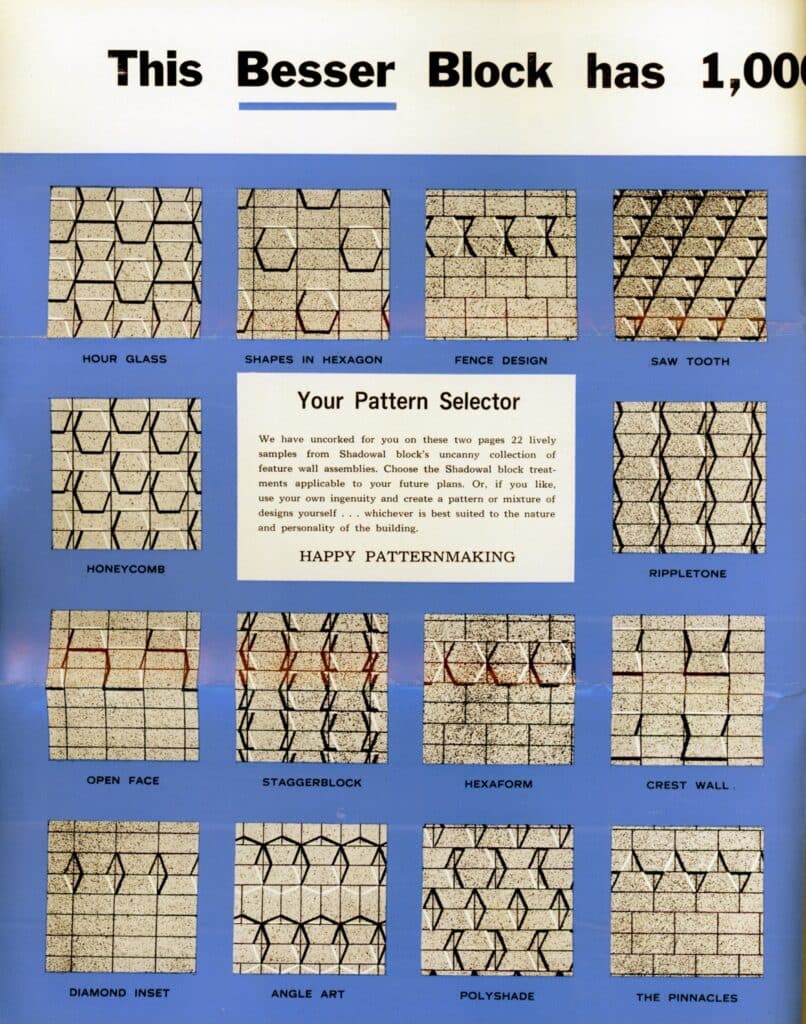
Besser Vibrapac Masonry Australian marketing material
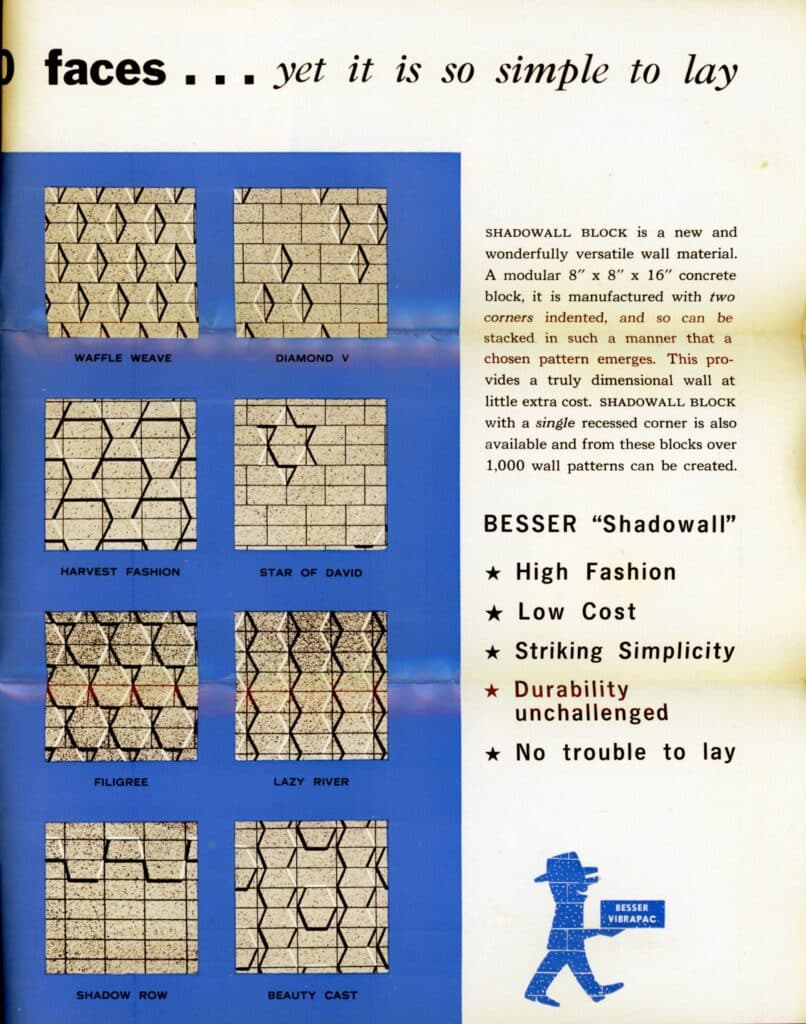
Besser Vibrapac Masonry Australian marketing material
In the 1950s and 1960s, Besser blocks became very popular in suburban American homes, as they were used to create decorative screens and entry walls that added privacy and style to the landscape. Besser blocks were also used to create geometric patterns and textures on the exterior and interior walls of houses, garages, and fences. Some of the most iconic examples of mid-century modern architecture that feature Besser blocks are the Eames House in California, the Miller House in Indiana and the Case Study Houses in Los Angeles.

Besser Vibrapac Masonry Australian marketing material
In Australia, Besser blocks also had a significant impact on mid-century modern architecture, especially in Tasmania. In the post-war period, Tasmania experienced a boom of new industries, immigrants, and modern appliances, which created a demand for new and affordable building materials and designs. Besser blocks were locally made by Besser Vibrapac Masonry at its Lutana factory in Hobart.
They were widely used for load-bearing walls, structural walls, decorative walls, fences, and screens. Some of the notable examples of Tasmanian architecture that use Besser blocks are the Wilson Robson Building in Hobart, the Hydro Electric Commission Building in Launceston, and the Cadbury Factory in Claremont.
Besser blocks are still used today for various architectural purposes, as they offer a retro and nostalgic appeal that blends well with contemporary design. Besser blocks can also be painted, polished, or rendered to create different effects and styles. Besser blocks are a testament to the creativity and innovation of mid-century modern architecture, as they demonstrate how a simple and humble material can be transformed into something beautiful and functional.Besser blocks.
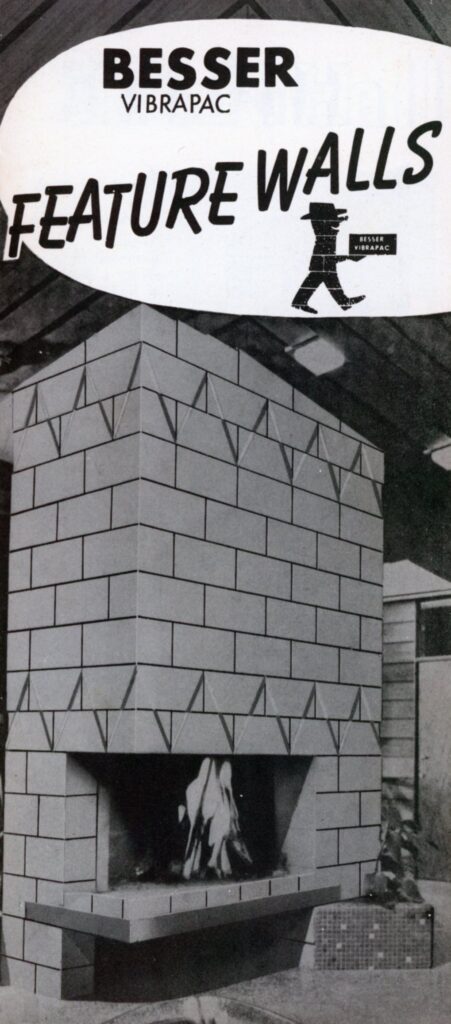
Besser Vibrapac Masonry Australian marketing material

Besser Vibrapac Masonry Australian marketing material
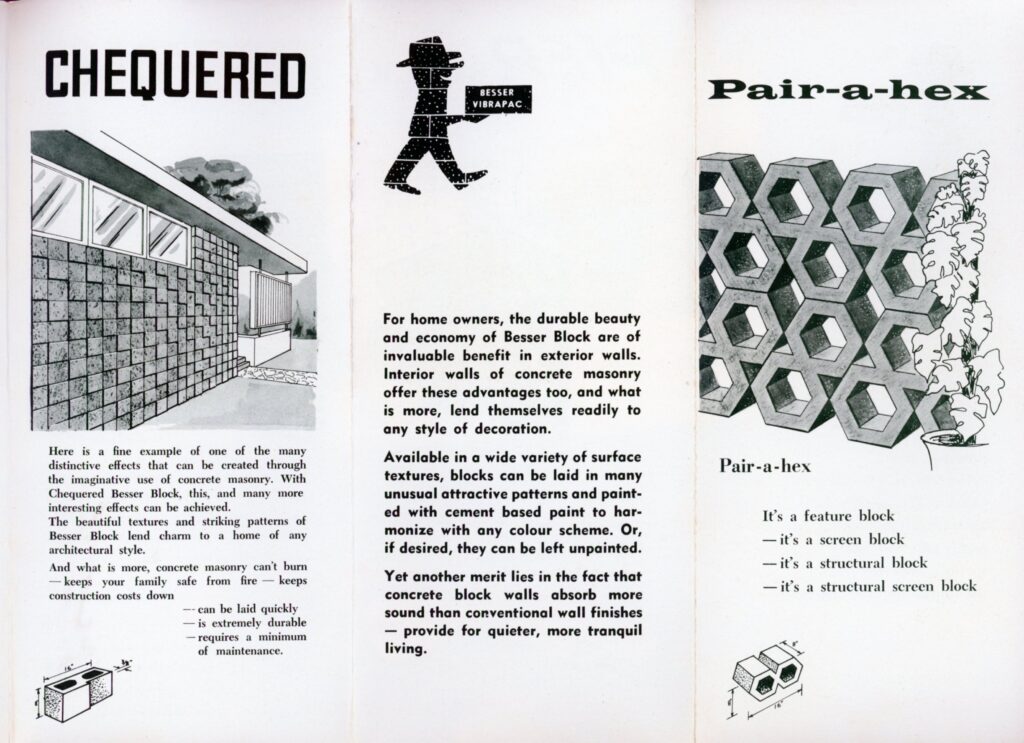
Besser Vibrapac Masonry Australian marketing material
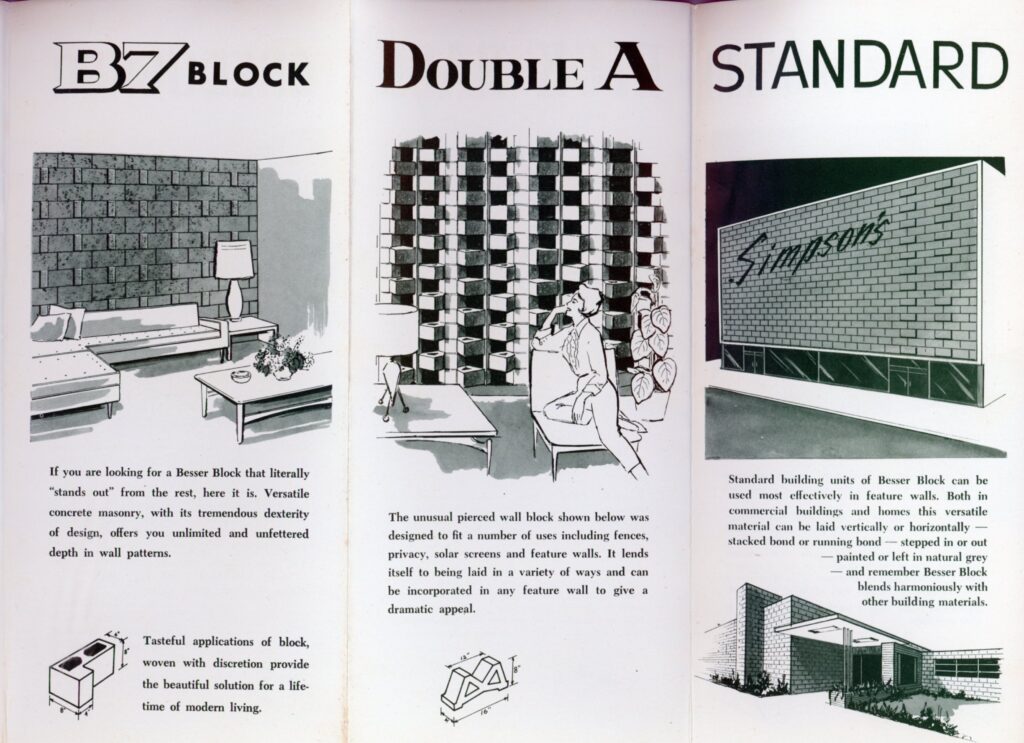
Besser Vibrapac Masonry Australian marketing material
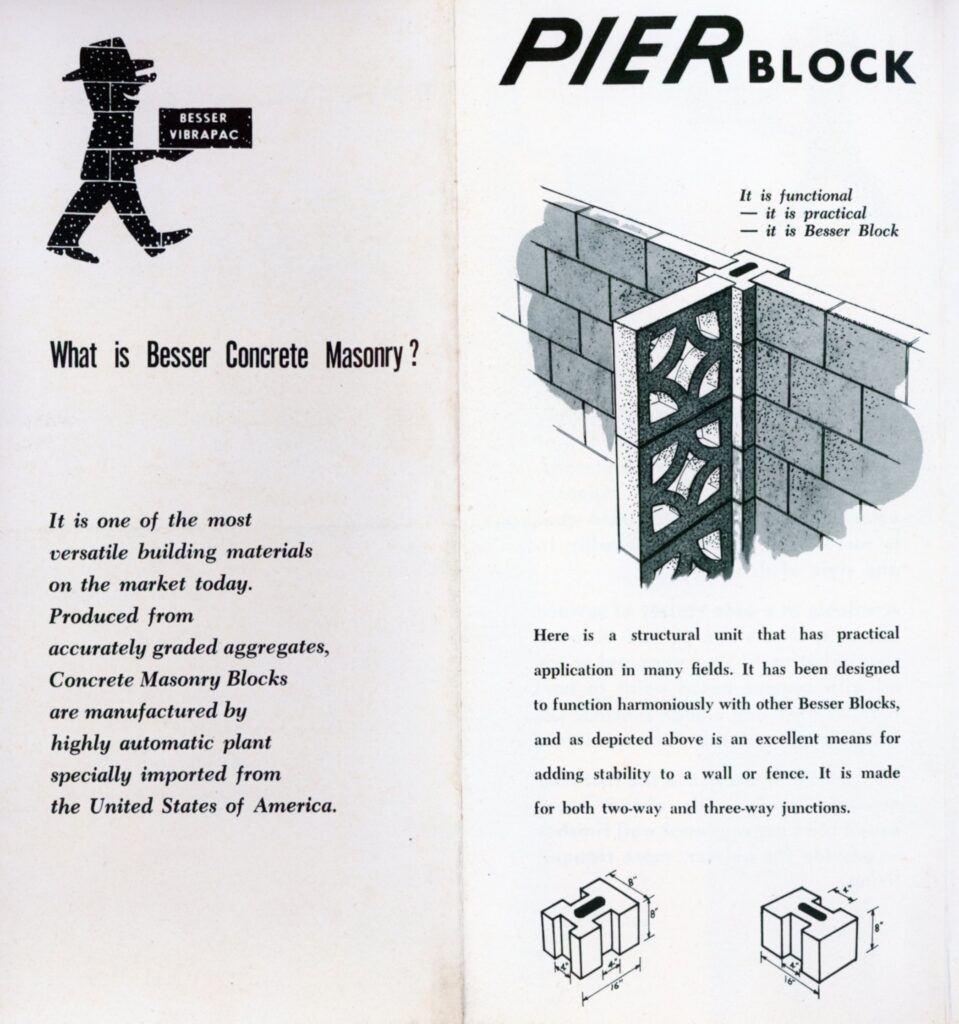
Besser Vibrapac Masonry Australian marketing material

Besser Vibrapac Masonry Australian marketing material

Besser Vibrapac Masonry Australian marketing material

Besser Vibrapac Masonry Australian marketing material
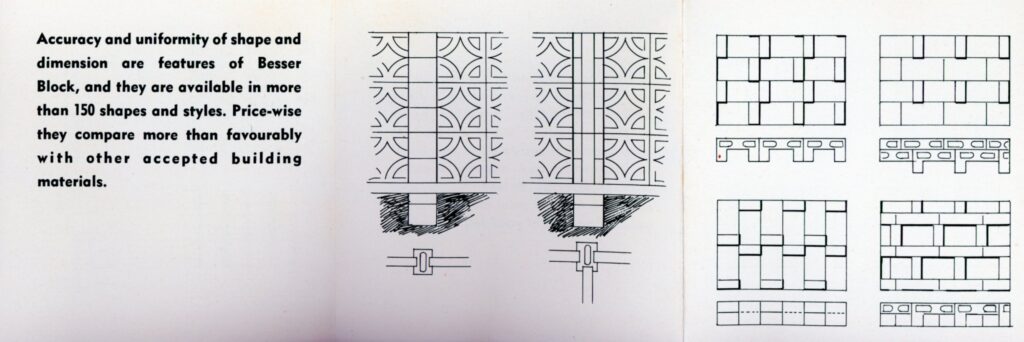
Besser Vibrapac Masonry Australian marketing material

Besser Vibrapac Masonry Australian marketing material


